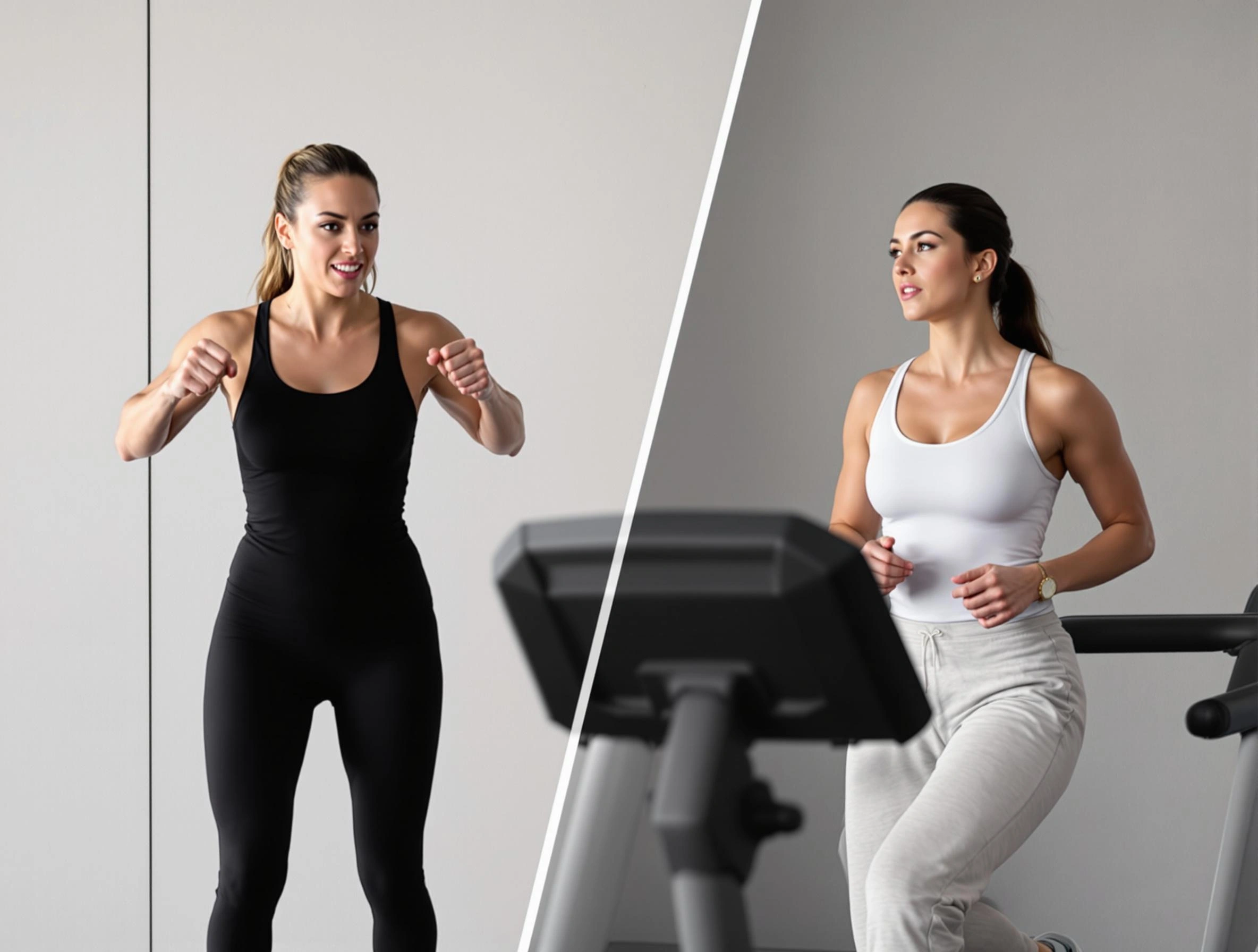HIIT and Bodyweight Exercises: How to Build an Effective Routine for Burning Calories at Home
In today’s fast-paced world, finding time to hit the gym or invest in expensive equipment can be a challenge. However, achieving fitness goals doesn’t have to be complicated or costly. High-Intensity Interval Training (HIIT) combined with bodyweight exercises offers a powerful, equipment-free solution for burning calories, building strength, and improving overall fitness—all from the comfort of your home. This article will guide you through crafting an effective HIIT and bodyweight routine, providing practical tips, examples, and insights to help you maximize your results.
What is HIIT and Why is it Effective?
High-Intensity Interval Training (HIIT) is a workout strategy that alternates between short bursts of intense exercise and periods of rest or low-intensity recovery. This approach has gained popularity due to its efficiency and effectiveness in burning calories, improving cardiovascular health, and boosting metabolism.
The Science Behind HIIT
HIIT works by pushing your body to its anaerobic threshold during high-intensity intervals, which increases oxygen consumption and triggers the afterburn effect, scientifically known as Excess Post-Exercise Oxygen Consumption (EPOC). This means your body continues to burn calories at an elevated rate even after the workout is over. Studies have shown that HIIT can burn more calories in less time compared to steady-state cardio, making it an ideal choice for busy individuals.
Benefits of HIIT
- Time Efficiency: A typical HIIT session lasts between 15 to 30 minutes, making it easy to fit into a busy schedule.
- Calorie Burn: HIIT can burn a significant number of calories in a short period, both during and after the workout.
- Improved Cardiovascular Health: HIIT enhances heart health by improving blood pressure, cholesterol levels, and overall cardiovascular endurance.
- Fat Loss and Muscle Retention: Unlike steady-state cardio, HIIT helps preserve muscle mass while promoting fat loss.
The Power of Bodyweight Exercises
Bodyweight exercises are movements that use your own weight as resistance, such as push-ups, squats, and planks. These exercises are versatile, require no equipment, and can be modified to suit any fitness level.
Advantages of Bodyweight Training
- Accessibility: No gym membership or equipment is required, making it easy to work out anywhere.
- Functional Strength: Bodyweight exercises mimic natural movements, improving balance, coordination, and overall functional fitness.
- Scalability: Exercises can be adjusted to increase or decrease difficulty, ensuring continuous progress.
- Full-Body Engagement: Many bodyweight exercises engage multiple muscle groups, providing a comprehensive workout.
Designing an Effective HIIT and Bodyweight Routine
Creating a successful HIIT and bodyweight routine involves understanding your fitness level, setting clear goals, and structuring your workouts for maximum efficiency. Below is a step-by-step guide to building a routine that works for you.
Step 1: Assess Your Fitness Level
Before diving into a HIIT routine, it’s essential to evaluate your current fitness level. Beginners should start with shorter intervals and lower-intensity exercises, while advanced individuals can incorporate more challenging movements and longer intervals.
Step 2: Set Clear Goals
Determine what you want to achieve with your workouts. Whether it’s fat loss, improved endurance, or increased strength, having clear goals will help you tailor your routine accordingly.
Step 3: Choose Your Exercises
Select a variety of bodyweight exercises that target different muscle groups. Here are some examples:
- Lower Body: Squats, lunges, jump squats, and glute bridges.
- Upper Body: Push-ups, tricep dips, plank shoulder taps, and burpees.
- Core: Planks, mountain climbers, Russian twists, and leg raises.
- Cardio: High knees, jumping jacks, and skater jumps.
Step 4: Structure Your Workout
A typical HIIT workout consists of the following components:
- Warm-Up (5-10 minutes): Prepare your body with dynamic stretches and light cardio, such as jogging in place or arm circles.
- Work Intervals (20-60 seconds): Perform each exercise at maximum effort.
- Rest Intervals (10-30 seconds): Use this time to recover before the next interval.
- Cool-Down (5-10 minutes): Stretch and relax your muscles to prevent soreness and improve flexibility.
Sample HIIT and Bodyweight Routine
Here’s a beginner-friendly routine to get you started:
- Warm-Up: 5 minutes of dynamic stretches and light cardio.
- Workout:Jump squats (30 seconds) / Rest (15 seconds)Push-ups (30 seconds) / Rest (15 seconds)Mountain climbers (30 seconds) / Rest (15 seconds)Plank (30 seconds) / Rest (15 seconds)Repeat the circuit 3-4 times.
- Cool-Down: 5 minutes of stretching.
Step 5: Progress Over Time
As your fitness improves, gradually increase the intensity and duration of your workouts. You can do this by:
- Adding more rounds to your circuit.
- Reducing rest periods between intervals.
- Incorporating advanced variations of exercises (e.g., plyometric push-ups or single-leg squats).
Tips for Maximizing Your HIIT and Bodyweight Workouts
To get the most out of your routine, consider the following tips:
1. Focus on Form
Proper form is crucial to prevent injuries and ensure you’re targeting the right muscles. Take the time to learn the correct technique for each exercise.
2. Stay Consistent
Consistency is key to seeing results. Aim to work out 3-5 times per week, depending on your fitness level and goals.
3. Listen to Your Body
While HIIT is intense, it’s important to avoid overtraining. If you feel fatigued or experience pain, take a break or modify your routine.
4. Incorporate Variety
Keep your workouts engaging by rotating exercises and trying new movements. This will also prevent plateaus and ensure balanced muscle development.
5. Pair with a Healthy Diet
Exercise alone isn’t enough to achieve your fitness goals. Pair your routine with a balanced diet rich in whole foods to fuel your body and support recovery.
Common Mistakes to Avoid
Even the most well-intentioned fitness enthusiasts can make mistakes that hinder progress. Here are some pitfalls to watch out for:
1. Skipping the Warm-Up or Cool-Down
Neglecting these essential components can lead to injuries and reduced performance. Always allocate time for proper warm-up and cool-down.
2. Overtraining
While HIIT is effective, doing it every day can lead to burnout and overuse injuries. Allow your body time to recover by incorporating rest days or low-intensity activities like yoga or walking.
3. Ignoring Recovery
Recovery is just as important as the workout itself. Prioritize sleep, hydration, and nutrition to support muscle repair and growth.
4. Focusing Solely on HIIT
While HIIT is excellent for burning calories, it’s beneficial to include other forms of exercise, such as strength training and flexibility work, for a well-rounded fitness routine.
Final Thoughts
HIIT and bodyweight exercises offer a practical, efficient, and cost-effective way to achieve your fitness goals without the need for a gym or equipment. By understanding the principles of HIIT, selecting the right exercises, and structuring your workouts effectively, you can create a routine that burns calories, builds strength, and improves overall health—all from the comfort of your home.
Remember, consistency and proper form are key to success. Start small, progress gradually, and listen to your body. With dedication and the right approach, you’ll be well on your way to achieving your fitness goals.
So, why wait? Lace up your sneakers, clear some space, and get ready to transform your body and mind with the power of HIIT and bodyweight exercises!









Add comment